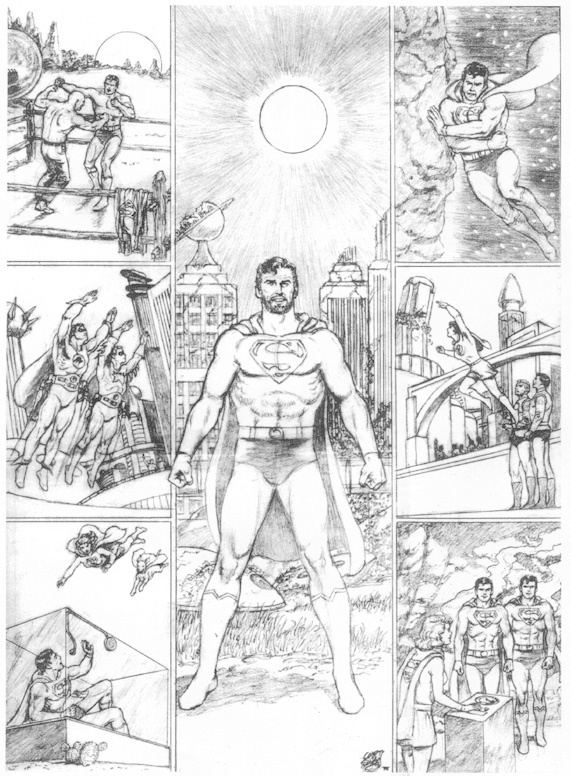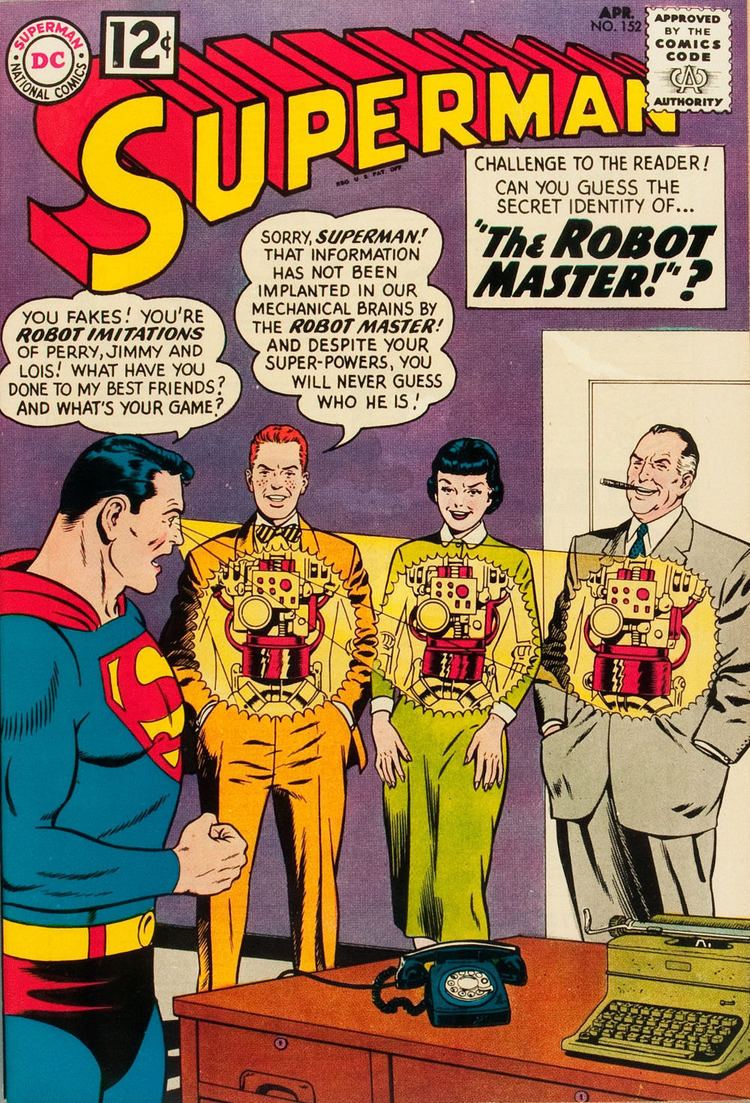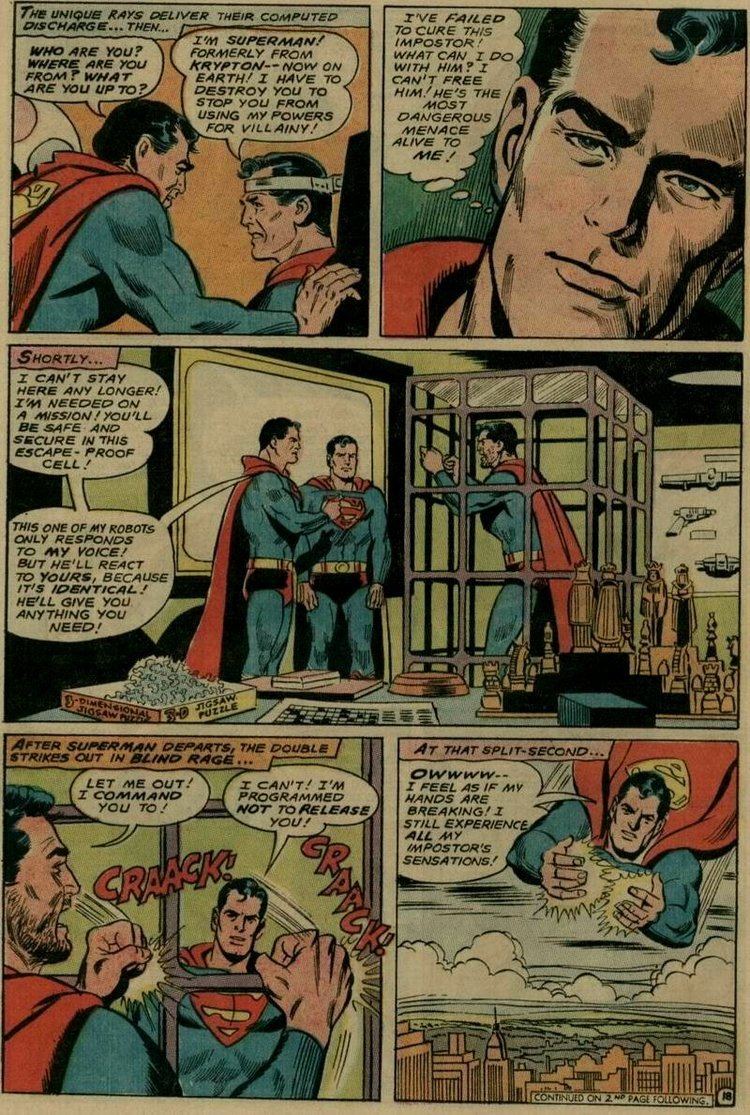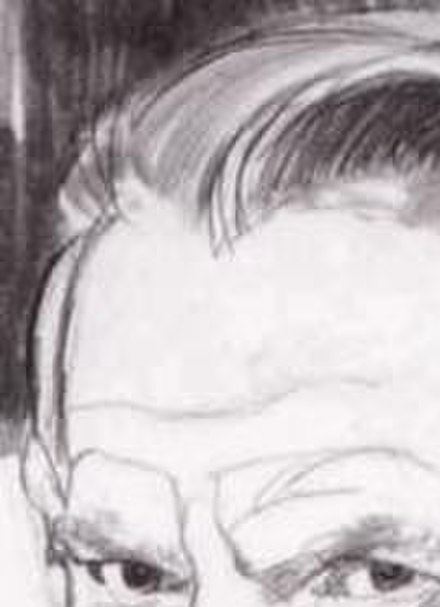Nationality American | Name Curt Swan Role Artist | |
 | ||
Born Douglas Curtis SwanFebruary 17, 1920 ( 1920-02-17 ) Notable works Action ComicsAdventure ComicsSuperman Awards Will Eisner Award Hall of Fame, Inkpot Award Similar People Cary Bates, Otto Binder, Al Plastino, Jerry Siegel, Elliot S Maggin | ||
Superman artists curt swan and jerry ordway in cleveland oh 1988
Douglas Curtis "Curt" Swan (February 17, 1920 – June 17, 1996) was an American comics artist. The artist most associated with Superman during the period fans call the Silver Age of Comic Books, Swan produced hundreds of covers and stories from the 1950s through the 1980s.
Contents
- Superman artists curt swan and jerry ordway in cleveland oh 1988
- Curt swan superman 96 eulogy by arlen schumer
- Early life and career
- Superman
- Later life and career
- Art style
- Legacy
- References

Curt swan superman 96 eulogy by arlen schumer
Early life and career

Curt Swan, whose Swedish grandmother had shortened the original family name of Swanson, was the youngest of five children. Father John Swan worked for the railroads; mother Leontine Jessie Hanson had worked in a local hospital. As a boy, Swan's given name – Douglas – was shortened to "Doug," and, disliking the phonetic similarity to "Dog," Swan thereafter reversed the order of his given names and went by "Curtis Douglas," rather than "Douglas Curtis."

Having enlisted in Minnesota's National Guard's 135th Regiment, 34th Division in 1940, Swan was sent to Europe when the "federalized" division was shipped initially to Northern Ireland and Scotland. While his comrades in the 34th eventually went into combat in North Africa and Italy, Swan spent most of World War II working as an artist for the G.I. magazine Stars and Stripes. While at Stars and Stripes, Swan met writer France Herron, who eventually directed him to DC Comics.

During this period Swan married the former Helene Brickley, who he had met at a dance at Fort Dix, New Jersey, and who was stationed near him in Paris in 1944 as a Red Cross worker; they were married in Paris on April 1945. Shortly after returning to civilian life in 1945 he moved from Minnesota to New Jersey and began working for DC Comics. Apart from a few months of night classes at the Pratt Institute under the G.I. Bill, Swan was an entirely self-taught artist. After a stint on Boy Commandos he began to just pencil pages, leaving the inking to others.
Superman

Initially, Swan drew many different features, including "Tommy Tomorrow" and "Gangbusters", but slowly he began gravitating towards the Superman line of books. His first job pencilling the iconic character was for Superman #51 (March–April 1948). Many comics of the 1940s and 1950s lacked contributor credits, but research shows that Swan began pencilling the Superboy series with its fifth issue in 1949. He drew the first comics meeting of Superman and Batman in Superman #76 (May–June 1952). The two heroes began teaming on a regular basis in World's Finest Comics #71 (July-Aug. 1954) in a story which was also drawn by Swan. Swan always felt that his breakthrough came when he was assigned the art duties on Superman's Pal, Jimmy Olsen, in 1954.
Swan didn't take to line editor Mort Weisinger's controlling style. Swan discussed this period in an interview: "I was getting terrible migraine headaches and had these verbal battles with Mort. So it was emotional, physical. It just drained me and I thought I'd better get out of here before I go whacko." After leaving comics for the advertising world in 1951, Swan soon returned, for National's higher paychecks. And as biographer Zeno notes, "The headaches went away after [Swan] gained Weisinger's respect by standing up to him."
Around 1954, Swan unsuccessfully pitched an original comic strip for newspaper syndication. Called Yellow Hair, it was about a blond boy raised by Native Americans. A couple of years later, starting with the episode of June 18, 1956, Swan drew the Superman daily newspaper comic strip, which he continued on until November 12, 1960.
In the view of comics historian Les Daniels, Swan became the definitive artist of Superman in the early 1960s with a "new look" to the character that replaced Wayne Boring's version. The Composite Superman was co-created by Swan and Edmond Hamilton in World's Finest Comics #142 (June 1964). Swan and writer Jim Shooter crafted the story "Superman's Race With the Flash!" in Superman #199 (Aug. 1967) which featured the first race between the Flash and Superman, two characters known for their super-speed powers. Over the years, Swan was a remarkably consistent and prolific artist, often illustrating two or more titles per month. Swan remained as artist of Superman when Julius Schwartz became the editor of the title with issue #233 (Jan. 1971), and writer Denny O'Neil streamlined the Superman mythos, starting with the elimination of Kryptonite. Among Swan's contributions to the Superman mythos, he and writer Cary Bates co-created the supervillains Terra-Man and the 1970s version of the Toyman as well as the superhero Vartox. Writer Martin Pasko and Swan created the Master Jailer character in Superman #331(January 1979).
Later life and career
After DC's 1985 12-issue limited series Crisis on Infinite Earths and with the impending 1986 revision of Superman by writer/artist John Byrne, Swan was released from his duties on the Superman comics. Critic Wallace Harrington summed up Swan's dismissal this way:
. . . the most striking thing that DC did was to completely turn their back on the one man that had defined Superman for three decades. . . . They closed the door and turned out the lights on the creator that had defined their whole line. With no real thanks, no pomp nor circumstance, DC simply relieved Curt of his artistic duties on Superman. Curt Swan who had drawn Superman in Action, Lois Lane, Jimmy Olsen, Superman, and World's Finest, and drew Superboy in Adventure Comics, who was the quintessential Superman artist of the 1960s, '70s and '80s. He became was just another victim of the 1980's implosion. Gone.
Swan's last work as regular artist on Superman was the non-canonical 1986 story "Whatever Happened to the Man of Tomorrow?", written by Alan Moore.
After this, Swan continued to do occasional minor projects for DC, including the artwork of what is thought to be one of the rarest Superman comics ever published, titled "This Island Bradman" (written by David P. Levin), a comic book that was privately commissioned in 1988 by real estate tycoon Godfrey Bradman as a Bar Mitzvah gift for his son, as well as an Aquaman limited series and special in 1989, and various returns on illustrating Superman, including the prestige format graphic novel one-shot Superman: The Earth Stealers in 1988.
In 1995, Swan did four illustrations for Penthouse Comix for the Larry Niven essay "Man of Steel, Woman of Kleenex," which detailed the problems that Superman would face in having sexual intercourse and reproducing with a human woman, using arguments based on humorous yet logical reconciliations between physics, biology, and the abilities of Kryptonians as presented in the Superman comic books.
Swan's swan song was five pages published posthumously in the 1996 special Superman: The Wedding Album.
Swan died June 17, 1996. Helene Swan died at the age of 91 on January 27, 2012.
Art style
Comics historian Arlen Schumer praised Swan's ability to depict "the spectrum of human emotion, from agony to anger, mournful to mirthful." As characterized by critic Paul Gravett, Swan's Superman made ". . . Krypton's last son in exile, the alien in our midst, into someone like us, who would think and feel as well as act, who was approachable, big-hearted, considerate, maybe physically superpowerful yet gentle, noble yet subtly tragic." In a similar vein, Swan biographer Eddy Zeno calls Swan "the Norman Rockwell of . . . comics." Gary Groth, the editor-in-chief of The Comics Journal, remarked that "Swan is symptomatic of what the industry requires. They adore Swan at DC because they give Swan a script and it says 'Superman flies out the window'... and there's Superman flying out the window. The script says 'Clark Kent walking down the hall' and there's Clark Kent walking down a hall. He's just a technician who does exactly what's required of him."
With his frequent inker Murphy Anderson from 1970–1974 and 1988–1989, the pair's collaborative artwork came to be called "Swanderson" by the fans. Despite his and Anderson's success together, Swan's favorite inker was Al Williamson, with whom he only worked with for a short time, from 1985–1986.
Legacy
In 1985, DC Comics named Swan as one of the honorees in the company's 50th anniversary publication Fifty Who Made DC Great.
Swan's favorite story – one of the few he both pencilled and inked – was "I Flew With Superman" from Superman Annual #9 (1983), in which Swan himself appears and helps Superman solve a case.
In a story titled "Swan's Way," issue #92 of the Legion of Super-heroes (May 1997) memorialized Swan with a cameo appearance as an art teacher.
Elliot S! Maggin:
Alan Moore:
